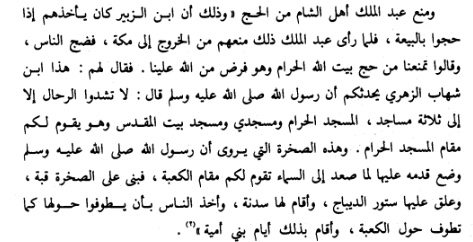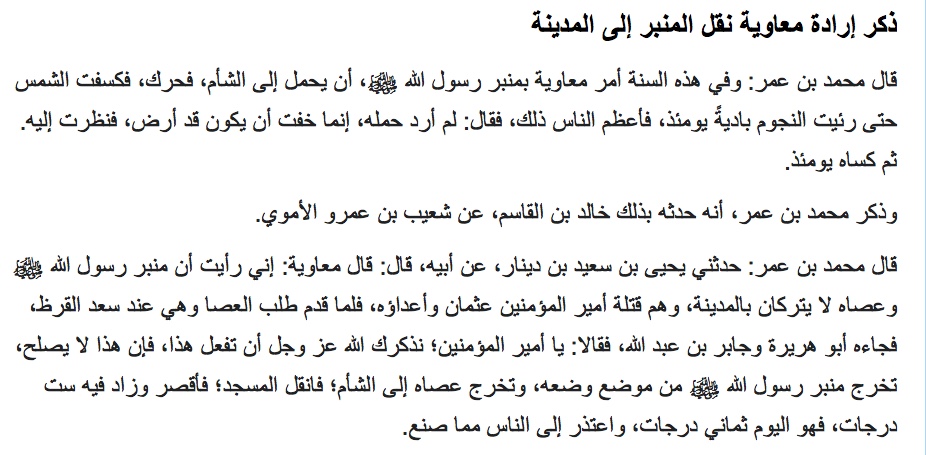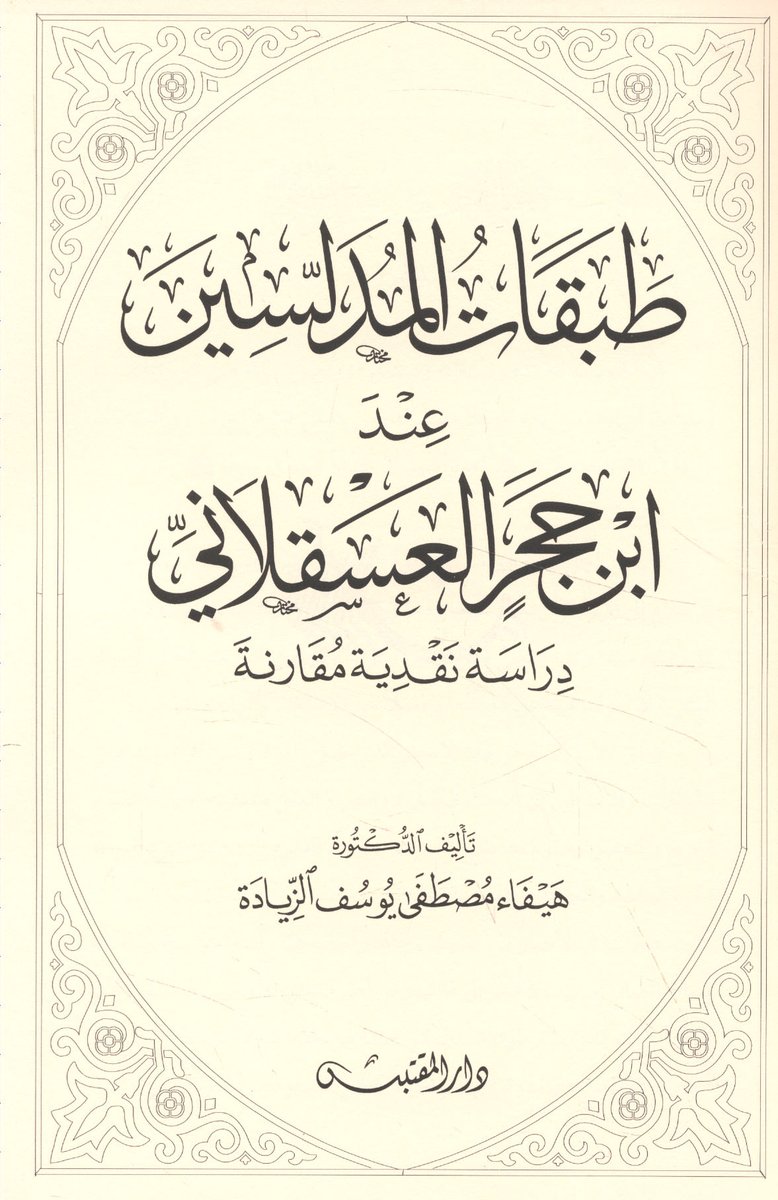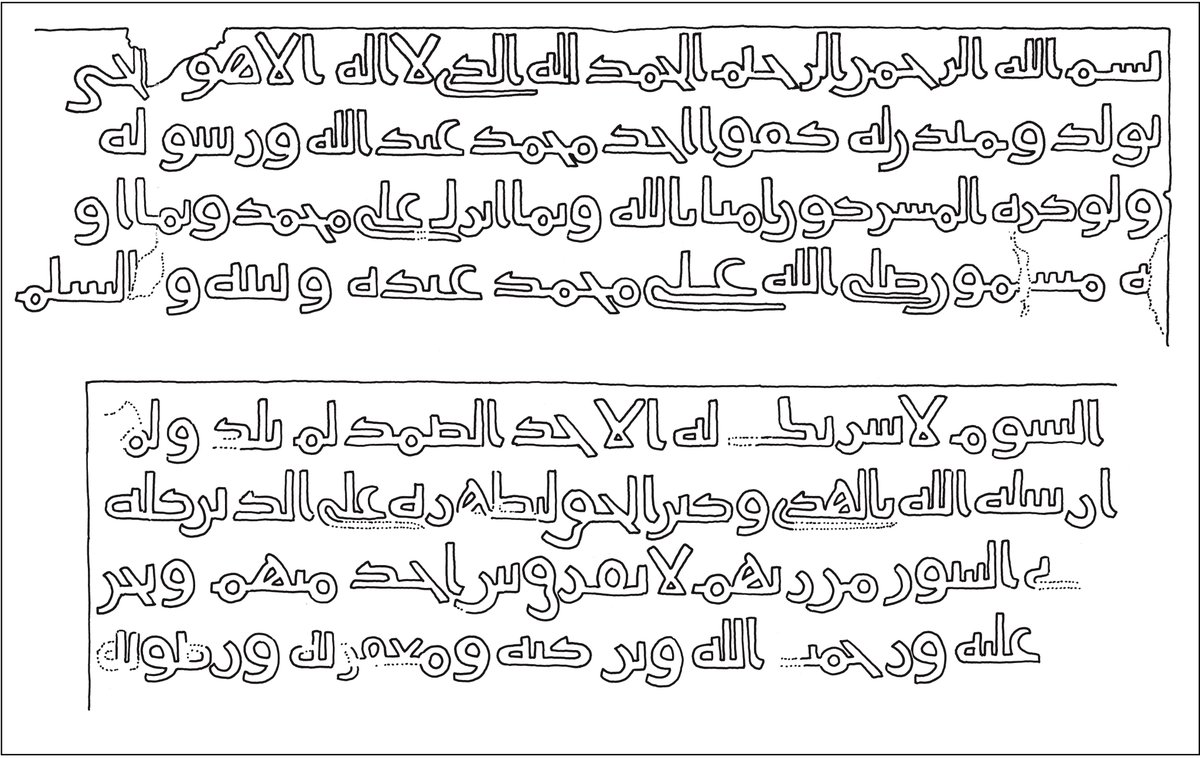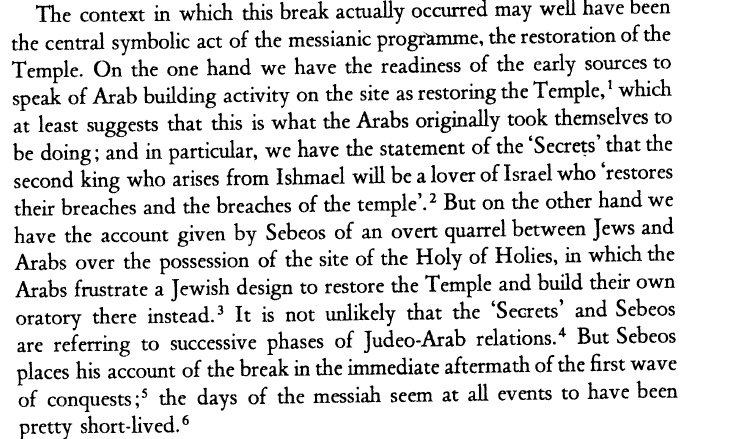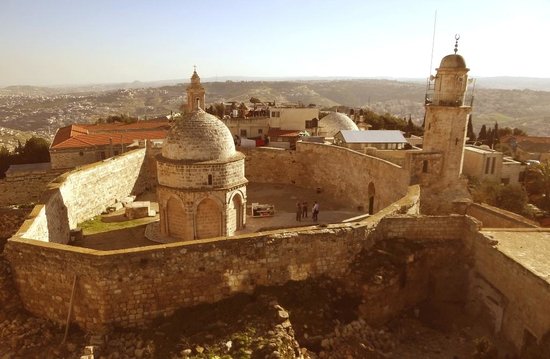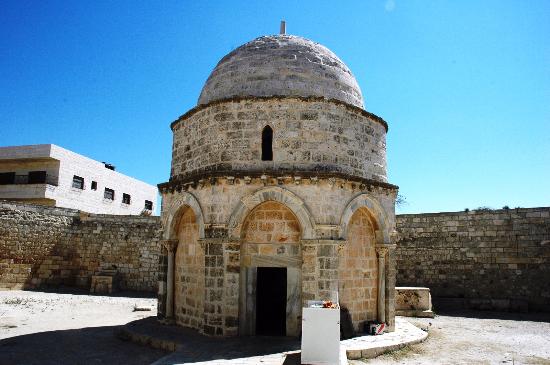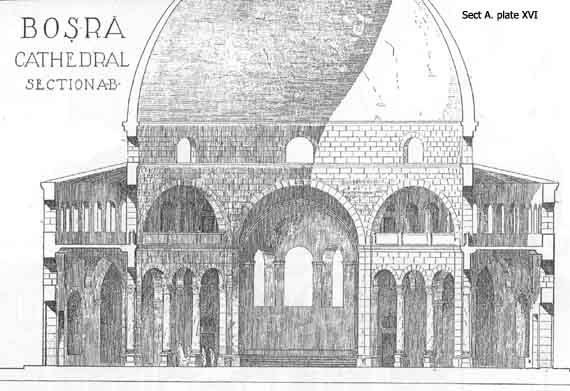1/The history of the Hagia Sophia in Constantinople and the Dome of the Rock in Jerusalem is intertwined. The new status of Constantinople as the New Jerusalem played a direct role in the development of early Muslim religiosity and religious identity.
2/Muslim propagandists touted caliphs ʿUmar I (d. 644) and ʿAbd al-Malik (d. 705) Davidic Messiahs who would restore (old) Jerusalem back to its former glory. For decades academics debated the motivations behind the construction of the Dome of Rock on an ancient holy Jewish site
3/Did ʿAbd al-Malik who is responsible for building the Dome of the Rock want to align early Muslim religiosity with late ancient Jewish messianism? A 2017 study by Levy-Rubin hints at the former in light of new evidence she consulted https://www.academia.edu/35185109/M._Levy-Rubin_Why_was_the_Dome_of_the_Rock_built_A_new_perspective_on_a_long-discussed_question_Bulletin_of_the_School_of_Oriental_and_African_Studies_BSOAS_80.3_2017_pp._441-464
4/We will come back to LR study later. But it is worth mentioning that the earliest Muslim historians too proffered controversial accounts to explain ʿAbd al-Malik's motivation construct the unique building adjacent to the Temple Mount.
5/The Abbasid historian al-Yaʿqūbī (d. 897) writes that ʿAbd al-Malik stopped the Syrians from making the ḥajj pilgrimage out of fear they would be made to give homage to his rival ʿAbd Allah b. Zubayr who proclaimed himself caliph in Mecca in 683 AD lasting until death in 692.
6/When the people reproached him complaining their religious obligation is being hindered, ʿAbd al-Malik fell back on the Umayyad propagandist and great jurist and ḥadīth authority al-Zuhrī to lend religious veneer to the sanctity of Jerusalem's Dome of the Rock.
7/Zuhrī was tasked with justifying the performance of the ḥajj rituals such as the ṭawāf (circumambulation) as something that could take place at the Dome of the Rock in Jerusalem with the same validity as that around the Kaʿba in Mecca.
8/There is good reason to reject al-Yaʿqūbī's account above. First, Yaʿqūbī was an Abbasid propagandist of Shii tendencies. Second, it seems unlikely that a respected authority such as Zuhrī would justify an act so brazen and in clear opposition to the ordinances of Islamic law.
9/On the other hand, it is entirely plausible that ʿAbd al-Malik would fancy himself as a reformer of some kind. Historical evidence abound of the caliph intervening in religious matters which usually fell outside the purview of political rulers.
10/Moreover, the desire to transfer the centre of religious power away from Mecca and Medina and to make Syria the new Muslim sanctuary is consistent with early Umayyad attempts that started with Muʿāwiyah himself, as recalled in the medieval sources, not least al-Ṭabarī.
11/In addition, Zuhrī served in the Umayyad court & played instrumental role the making of Umayyad efforts to carve out new religious identity. He was not immune from criticisms of propaganda & tadlīs, that is, to conceal the defects of the ḥadīths he supposedly heard.
12/In fact, Ibn Ḥajar, the celebrated evaluator and critic of ḥadīth placed al-Zuhrī in the third of five ranks of famous authorities guilty of tadlīs. Those in the third rank are said to commit major tadlīs.
13/In modern scholarship Ignaz Goldziher advanced the view of Yaʿqūbī noting that the Umayyads wanted a Syrian alternative to the Kaʿab, they had always shown contempt and acrimony towards the sacred cities, on account of them being bastion of Muslim piety and anti-Umayyad.
14/Shelomo Goitein takes another view. ʿAbd al-Malik built the Dome of the Rock to compete against Christianity. The monument sought to intimidate Christians, to tower above the glimmering crosses in Jerusalem, and, with Arabic inscription, evince Muslim triumphalism
15/in carefully selected quranic verses critical of the doctrine of Trinitarianism and sonship. The majority of scholarly views today, however, fall into the camp that emphasises the Jewish origin behind the construction of the Dome of the Rock. E.g. Van Ess.
16/Amikam Elad and Patricia Crone are of the view (mostly Elad, though) that ʿAbd al-Malik conceived himself as a Davidic Messiah who rebuilt the Temple of Solomon. Crone and Cook famously argued that the Muslims had intended to build the temple before their fallout with the Jews
17/In his "The 'Praises of Jerusalem' as a source for the early history of Islam," Sharon demonstrated with good evidence that in the early years of the Dome of the Rock Jews took part in the major ceremonies performed according to Jewish rites.
18/Sharon is followed by Busse, Rabbat, and Elad. Academic historians reject the thesis put forward by some traditional Muslim historians, that ʿAbd al-Malik was led by incentive to honour sanctity of site of Muḥammad supposed Night Journey, from the same famous rock.
19/Architects who study the medieval world recognise the of the Dome of the Rock for its brilliance and oddity at once. It exhibits the unmistakable imprint of Byzantine architecture and other artistic influences evocative of buildings and cultic centres in late antiquity.
20/The English architect L Creswell identifies two buildings in late antique Syria that could have inspired the construction designs of the Dome of the Rock. The first contender is the Church of Ascension in the Mount of Olive, situated adjacent to the Dome of the Rock.
21/And more significantly it bears a similar geometrical construction to the DoR including a ubiquitous octagonal enclosure doing back to before 378 AD. The second possible source of architectural influence is identified as the Bosra Cathedral, built in 573 AD in southern Syria.
22/Slightly later Muslim sources take a subtle turn towards a revised view. Livine-Kafri excellent study has shown that Muslim traditions show a desire to side with Jews over Christians. The latter are blamed for bringing destruction to the Temple and desecrating sacred Jewish
23/with dung-heap. It was the caliph ʿUmar I, conquerer of the Temple (בֵּית־הַמִּקְדָּשׁ; بيت المقدس) who cleared the dung. A fascinating report cited in al-Ṭabarī repeats the story of ʿUmar cleaning of the Mount with one significant addition.
24/The "coming" of ʿUmar was apparently prophesied. "Rejoice O Jerusalem! al-Fārūq will come to you and cleanse you." Other traditions speak of ʿAbd al-Malik: "I shall send to you my servant ʿAbd al-Malik, who will build you and adorn you."
25/By the mid-8th C there were Muslim traditions in circulation that described the (re)building of Jerusalem's sacred Jewish sites as part of God's divine plan to help the Jewish people find redemption, through the Muslim figures of ʿUmar b. al-Khaṭṭāb and ʿAbd al-Malik. END.

 Read on Twitter
Read on Twitter